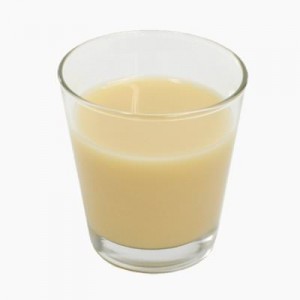Sodium carboxymethyl cellulose in Lactic Acid Bacteria Beverages
The lactic acid beverage is a kind of acidic milk beverage made from fresh milk by the lactic acid fermentation or mixing with acids, is a mixture consisting of many substances, containing about 88% water, and various substances in milk mutually compose a dispersed stabilizing system. As its products have proper sweet and sour taste, it is welcomed by the majority of consumers. In China, this product is rapidly growing popularity.
In the fermentation and production process of lactic acid beverages, if the nutrition enhancer is added in the beverages, resulting in the changes in the salt compositions of milk solution, solution density, etc., and the decrease in pH, heat treatment, etc., has a great impact on the stability of milk. Furthermore, since the final pH value of beverage is 4.2-4.4, and happens to be the isoelectric point of casein, thus solving the problem of protein precipitation is the technical key to the production of lactic acid beverages. Therefore, as an excellent stabilizing thickener, Sodium carboxymethyl cellulose enables to be widely used in the acidic protein beverages.
3.2.1 Stabilizing Mechanism of Sodium carboxymethyl cellulose
In the yogurt products, the stabilizer is used mainly to increase the sticky consistency of yogurt and improve its texture, state and taste. Sodium carboxymethyl cellulose is applied in the solidified yogurt to prevent the finished product from the precipitation of whey within the shelf life and to improve the structure of yogurt. The casein molecules with Brownian motion performed in water, due to gravity, coupled with repulsion of charged particles, and the lactic acid generated by the action of lactic acid bacteria, when the pH in the milk is close to the isoelectric point of casein, will produce precipitation and form the so-called gel if losing the charge, but will obtain a suspension of casein if rupturing the gel under stirring, and will gather gain and precipitate if stationary.
At this time, if adding Sodium carboxymethyl cellulose , the viscosity of solution will not be increased, and the hydrophilic groups on the surface of the casein particles will be combined with Sodium carboxymethyl cellulose into surface film and to form stable suspension. But the general stabilizer is poor in the thermal stability. If the above colloids are heated, due to the destruction of surface film, casein particles will gather again and get solidified. Then the thermally coagulated casein particles is not hydrophilic, and will not dispersed again in water after reducing the temperature, with continuous stirring.
Sodium carboxymethyl cellulose is now generally used as a stabilizer in yogurt, since Sodium carboxymethyl cellulose is negatively charged but has better thermal stability, can combine with protein base to form a dispersion system when pH is 4-5, and can get solidified but not precipitated within the acidic pH. This pH value level is related to the kind of protein and the nature of Sodium carboxymethyl cellulose , approximately between 4.6 and 5.5.
3.2.2 Advantages of Sodium carboxymethyl cellulose in Lactic Acid Beverage Processing
3.2.2.1 No Impact of Sodium carboxymethyl cellulose on the Viability of Fermenting Agent
Make the milk with the addition of 0.3% Sodium carboxymethyl cellulose and that without the addition of Sodium carboxymethyl cellulose fermented by comparative experiment. Four hours later, the acidity is respectively 87T and 86T; there is no significant difference tissue state and also no whey separation.
3.2.2.2 Acid Resistance of Sodium carboxymethyl cellulose
With the rise of the degree of substitution of Sodium carboxymethyl cellulose , the acid resistance gets enhanced. When the degree of substitution is higher than 0.8, the acid resistance will be significantly enhanced; when the degree of substitution is higher than 0.9, the acid resistance will be relatively good, suitable for making acidic beverages. The acid resistance of Sodium carboxymethyl cellulose is more expressed by the ratio of acidity to viscosity. When the ratio of acidity to viscosity for 2% Sodium carboxymethyl cellulose solution is higher than 0.8, showing that the acid resistance of Sodium carboxymethyl cellulose is relatively good. In conclusion, as a stabilizer in lactic acid beverages, Sodium carboxymethyl cellulose has good resistance to precipitation and a certain thermal stability, in addition to the advantages such as not increasing the viscosity of beverages, preventing whey separation and improving the structure of yogurt.

